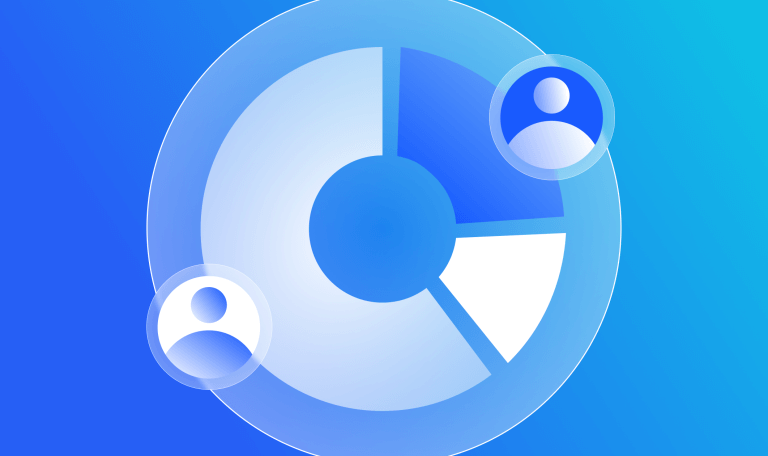Demographic Segmentation: The Key To Transforming Your Marketing Strategy

Crafting the perfect message for your audience is an art, but even great messages can fall flat if they aren’t precisely targeted. Generic messages often miss the mark, leaving your audience unengaged. That’s where demographic segmentation comes in – a strategic approach that can transform your marketing by dividing a broad audience into defined groups based on shared characteristics.
In today’s crowded marketplace, it’s tougher than ever for brands to stand out. But by tailoring your messages to specific demographic segments, you can forge meaningful connections with your audience.
Demographic segmentation empowers businesses with data-driven decision-making and helps optimize resources for better market penetration. It’s not just about messaging; it’s about backing up those messages with real-world data. Whether you’re a product manager, data analyst, or the CEO of a small business, this method is indispensable for achieving online success.
Curious to learn how and why? Let’s dive in.
What is demographic segmentation?
Demographic segmentation is the process of splitting the audience into smaller groups through quantifiable variables including gender, income, education, and occupation. Such an approach helps marketers’ messages to directly address the exact needs, preferences, and behaviors. If you know the demographic composition of your audience, you’ll be able to make more relevant marketing campaigns that may resonate deeper with the target audience and generate higher engagement and conversion.
For example, a fitness equipment company, such as YR Fitness, would target different groups based on their unique needs and purchasing power. High-income consumers might be interested in high-tech, luxury workout machines, while college students might prefer affordable, space-saving options. Understanding the relevance of each segment not only expands your reach but also enhances customer satisfaction.
A point of notice, therefore, would be the very nature of demographic segmentation in comparison to the other forms of segmentation. While psychographic segmentation focuses on lifestyle and interests, demographic segmentation focuses on purely statistical characteristics, which would prove helpful for broader trends and behaviors. This demographic data can be used by retailers to predict the shopping behavior of customers during festive seasons. Thus, they can plan effective marketing strategies much in advance.
The importance of demographic segmentation
Ignoring demographic segmentation is like sailing without a compass. Sure, you’ll eventually reach a destination, but it’s unlikely to be the one you intended.
Let’s explore why demographic segmentation is a crucial element in your marketing strategy:
Personalization and relevance
Personalization builds stronger bonds with clients. Satisfying particular needs and wants leads to trust and that drives long-term relationships with the targeted population. According to Salesforce, 75% of business buyers expect companies to understand their needs. This is going to significantly enhance the brand and work done with higher effectiveness.
Resource optimization
Resource optimization ensures that your marketing budget is spent wisely. By focusing on specific demographic segments, you maximize the value of every dollar spent. A McKinsey report echoes this, stating that personalization can reduce acquisition costs by up to 50%, highlighting the financial efficiency of targeted marketing.
Market insights
Market insights gained through demographic segmentation give you a clear direction toward your marketing. It’s almost as if you picked up a road map of where you really wanted to put in your investment for maximum return. For example, the use of demographic data can help in identifying early adopters by a company introducing a new product to communicate well with the market and make sure of a smooth market entry.
Advantages and disadvantages of demographic segmentation
While there is a series of advantages in demographic segmentation, there exist some of its challenges also. It is important to understand both strengths as well as limitations.
Advantages of demographic segmentation
1. Accuracy
Demographic data is typically easy to access through surveys, census data, and market research reports. This data enables precise targeting, increasing the success rate of your marketing strategies. For example, an automobile company might use demographic data to target ads for luxury cars to high-income consumers, leading to higher conversion rates.
2. Cost-effectiveness
Another advantage is the cost-effectiveness of demographic segmentation. It is usually inexpensive compared to other techniques like psychographic analysis. In most cases, demographic information is usually captured comprehensively in market research instruments and secondary data sources at a relatively low cost, thereby placing it within reach, even for small businesses. The economic viability for this translates into effective marketing without having to spend too much.
3. Audience relevance
Demographic segmentation makes marketing relevance very high. What works for one may not work for all, which is possible with a perfectly segmented approach. For example, a garment manufacturer might execute a campaign targeting teens with modern fashion while simultaneously running another campaign targeting the older population with classic apparel. In this way, each segment gets to view what is relevant to them, hence improving the engagement rate.
Disadvantages of demographic segmentation
1. Simplification
One downside of demographic segmentation is the risk of oversimplification. Demographic data can sometimes lead to stereotypical assumptions, causing businesses to miss out on unique consumer preferences.
For example, not all millennials prefer digital products; some still enjoy traditional, offline experiences. Combining demographic insights with other types of market segmentation can provide a more nuanced understanding.
2. Data updates
Keeping demographic data current is a challenge. Populations change over time due to migration, economic shifts, and evolving societal norms. What worked a few years ago might not be effective today. Regularly updating your data and reassessing your segmentation strategy is crucial for continued success.
3. Lack of depth
One of the limitations of demographic segmentation is that it lacks depth when one wants to gauge deeper consumer motivations. While it may let you know who your customers are, it may not show why they do things the way they do.
Doing demographic segmentation combined with psychographic and behavioral segmentation could give a more fine-tuned approach. Psychographic data extracts attitudes, values, and lifestyles for richer insights into more targeted marketing strategies.
Demographic segmentation: Key variables and examples
Various demographic variables give insight into consumer behavior. Here are some key variables and their applications:
Age
The preferences and spending behaviors of different age groups vary. For instance, a skincare company will pitch anti-aging remedies for the older population but will market acne treatments for teens and young adults.
And did you know? Netflix shows its users content based on demographic segmentation by age. The shows and movie categories recommended inside the Netflix streaming platform for different age groups increase engagement by displaying content relevant to the segment.
Gender
Men and women often have different preferences in many product categories. In the cosmetics industry, for example, makeup and beauty products are typically marketed differently based on gender. Razor companies, such as Gillette, also target men and women separately, focusing on product features that appeal to each gender.
Income
Income segmentation helps companies understand purchasing power. Luxury brands target high-income consumers with premium pricing, while discount retailers cater to lower-income target market groups with value-driven offers. Apple, for example, positions its high-end products like the iPhone Pro series for higher-income segments, while offering older models for budget-conscious consumers.
Occupation
Occupational targeting is crucial in B2B marketing. For instance, software companies might develop campaigns targeting specific industries, such as healthcare or finance, based on the needs of professionals in those fields. LinkedIn, for example, uses occupational segmentation to show users relevant content and job recommendations based on their professional backgrounds.
How to gather demographic data using Similarweb
Similarweb provides very impressive tools to gather and analyze all demographic data. It would be very helpful to know all these data in-depth in market research and analysis:
Website demographics
This tool describes the demographic structure of visitors to your website, including gender and age distribution. You can find out how your audience is demographically set up. Just enter a domain in the Website Analysis module to get this data. This will help you tailor your marketing strategies accordingly.
For example, an ecommerce shop selling eco-friendly products may want to analyze its competitor’s website traffic and find out which segment is the most engaged with the website. They can then adopt targeted marketing toward that demographic group who believe in green, clean living. In the image below, you can see that most of the leading age groups driving traffic to earthhero.com are aged 25-34 and that the website is mostly visited by women.
App demographics
Similarweb’s App Intelligence tools let you explore Android app user demographics to help you in user acquisition optimization and understand what demographics interact with your competitor’s apps.
For instance, if your app is most used by a specific age segment, you can therefore form targeted campaigns to grow its presence among users falling in this age group. This focused approach aids in designing ads that work well with the identified demographic, and improve the efficacy of your marketing efforts.
Web category analysis
Web Category Analysis helps to learn who tops the leaderboard in any given market. By this analysis, companies can benchmark against the leaders of the industry by looking at how their websites and applications fare. This will be very important especially if your company is entering a new market, since it paints a clear picture of the competitive landscape and how to strategize based on real data insights.
Create and track highly effective customer segments
Effective demographic segmentation enables businesses to cater to diverse audience segments based on their specific needs, leading to more impactful and successful marketing strategies.
With Similarweb’s market research tool, you can enhance user acquisition, increase customer engagement, and maximize conversion rates.
Ready to optimize your marketing strategy with granular audience insights? Start your data-based demographic analysis to:
- Gain a comprehensive understanding of your competitive landscape and identify key players in your market
- Track and analyze any website or app to drive your product sales
- Discover competitors’ winning marketing strategies and their top-performing products
FAQs
How does demographic segmentation differ from psychographic segmentation?
Demographic segmentation is based on measurable criteria: income, education, and gender. Psychographic segmentation, however, is concerned with the psychological characteristics of people, that is, style of life, interests, and values
Can demographic segmentation be used for both consumer and business markets?
Yes, demographic segmentation can be applied to both consumer and business markets. You might segment by company size, industry, or revenue in B2B.
What tools could businesses use for demographic segmentation?
Analytics tools like Google Analytics, combined with advanced tools like Similarweb, give a good view into demographic data. Tools in this area help to find out the characteristics of the audience and, hence, in a tailored marketing strategy.
How are demographic data changes affecting segmentation strategies?
Demographic data is dynamic and will continue to change along with economic trends, societal shifts, and technological changes. Continual updating and monitoring assures that the segmentation will be accurate and relevant.
Track your digital metrics and grow market share
Contact us to set up a call with a market research specialist



















